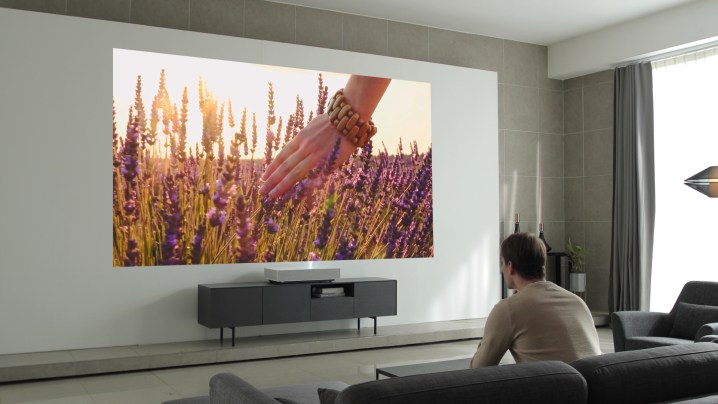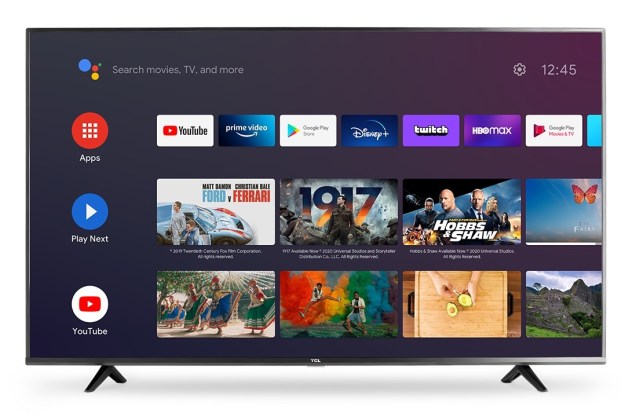
At CES 2019, LG showed off the HU85L, a short-throw laser TV projector capable of displaying a 90-inch image when placed just a mere 2.2 inches from a wall, or a 120-inch image when moved 5 inches further away. There were still a few unknowns: Would it have HDR? How exactly does the new twin-laser system produce the color green from just a red and a blue set of lasers? And how much would it cost? Now we have the answers as the HU85L has just been announced for retail as the $6,000 HU85LA 4K UHD Laser Smart Home Theater CineBeam Projector.
That’s right: Six thousand dollars. It’s a massive jump up from LG’s previous laser projector, the 4K HU80KA, which debuted at half that price. So what do you get for such a big investment in your home theater? For starters, the HU85LA pumps out a very bright 2,700 ANSI lumens, which is even brighter than LG said it would be at CES. Given that the HU80KA was capable of 2,500 lumens, we would expect the new model to be brighter, but not dramatically so. And yet, the specs on LG’s site tell a very different story. It rates the HU85LA’s contrast ratio at a staggering 2,000,000:1, whereas the HU80KA is listed at only 150,000:1. We don’t really know what accounts for this difference, but perhaps we’ll find out when we get a review model in-house.
Yes, it sports HDR10 compatibility, just like the HU80KA, and no, Dolby Vision is still not supported. LG claims the new “3Channel” laser system, powered by one red laser and two blue lasers (one blue laser uses a filter to create green), supports wider color coverage Rec.709 and DCI, and can reproduce up to 12-bit color — it’s LG’s way of saying you’ll get more accurate colors regardless of your source material.
The biggest difference on the HU85LA (other than better brightness and color) is the inclusion of LG’s ThinQ A.I. system, which embeds LG’s own smart voice assistant, as well as Google Assistant. Between these two A.I. engines, there should be very little this laser TV can’t do if you ask. You also get Bluetooth, Miracast screen-sharing, LG’s excellent WebOS interface, and two built-in 5-watt speakers.
Is there anything missing? Yes. Given that LG just announced the addition of Apple’s AirPlay 2 and HomeKit support to select models of its 2019 lineup, we’re frankly stunned there’s no mention of these features on a laser TV that costs far more than several of the TVs included in the announcement. Is there something inherent in the laser TV technology that precludes Apple’s wireless display and smart home standards? We’re not sure, but for $6,000, we think LG should figure out a solution.
Despite its high price tag, the HU85LA is hardly the most expensive laser TV we’ve seen lately. Hisense’s as-yet-unreleased triple-laser, 3,500-lumen 100L7T is likely going to debut at an astronomical $16,000 later this year.
Editors' Recommendations
- What is a laser TV?
- Optoma’s CinemaX 4K laser projectors now have faster response times for gamers
- Sony brings laser power, native 4K to every 2022 projector
- Epson’s new 4K laser projector does HDR10+, 120Hz gaming
- Amazon Fire TV Stick 4K Max packs even more power at just $55




